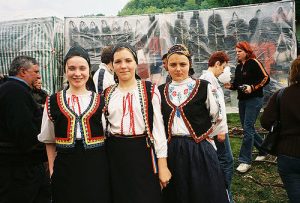Nội Dung Chính
ROMANIAN TRANSLATION – INTERPRETATION
Romanian which is also known as Daco-Romanian belongs to the Romance languages group. It is a part of the Italic branch of Indo-European family of languages. It is spoken by approximately 24 to 28 million people, a majority of whom can be found living in Romania and Moldova. It is recognized as the official language in Romania, Moldova and Vojvodina in Serbia. In Moldova it is referred to as Moldovan language. Romanian speakers can be found living in many countries across the globe. However their major concentrations can be found in Italy, Russia, Spain, Portugal, Israel, Ukraine, UK, US, Canada, Germany, and France.
With solution centers covering all over the worlds, global teams of Romanian localization and project management experts, advanced technology, and an external network
including thousands of freelancers, Thailand Translation has the resources to provide unparalleled global market expertise with comprehensive and practical local experience – Romanian translation – interpretation services.

See following information for our supported Romanian language services:
Romanian Document Translation
Romanian Legal Translation
Romanian Book Translation
Romanian Website/Software Translation
Romanian Consecutive Interpretation
Romanian Simultaneous Interpretation
Romanian Remote – Telephone Interpretation
Romanian Translation Services
Romanian Interpretation Services
Romanian Voice-overs Services
Romanian Subtitling, Captioning
Romanian Dubbing Services
Romanian Transcription Services
Romanian Staffing Solutions
Romanian Language Facts:
Telecommunications Romanian (Română) is an Eastern Romance language, spoken by about 28 million people, most of them in Romania, Moldova (where it is the official language) and neighbouring countries.
Romanian was probably one of the first Romance languages that got split from Latin. This was largely due to its native speakers’ geographical isolation. Consequently, it was not influenced by other Romance languages until recent times. This contributed towards making Romanian one of the most uniform European language. At present Romanian is the most important among various Eastern Romance languages.
Romanian has significant similarities with Italian, French, Spanish, and Portuguese. But it is closest to other Eastern Romance Languages like Aromanian, Istro-Romanian and Megleno-Romanian. When compared with other Romanian languages, it is closest to Italian. However it has been seen that Romanian speakers understand Italian much more easily than vice versa.
The various Romanian dialects are not very different from each other. Moreover the Romanian language is characterized by a dialect continuum; hence its various dialects cannot be neatly divided into various categories. At the most, differences between the dialects may include some additional regional words and phonetic dissimilarities. Fortunately for Romanian translation experts, written Romanian is the same across various dialects. The uniformity is due to the fact that the various Romanian languages were unified under Proto-Romanian language while under the domination of the Byzantine Empire between the 7th and 10th centuries.
The Romanian alphabet has been derived from Latin. Earlier it had twelve additional letters, but over the years they have been reduced to five. There are altogether seven vowels in the Romanian alphabet. In terms of nominal morphology it is conservative compared to most other Romance languages.
History
The Romanian territory was inhabited in ancient times by the Dacians, who spoke an Indo-European language, the Dacian language about which there is very little knowledge. There is a theory that it was fairly close to Latin, however there are no proof available to support this claim.
After the Roman conquest, Dacia was transformed in a Roman province and Vulgar Latin was used for administration and commerce. It is noteworthy that only a small portion of Dacia/Romania was conquered, most of the teritory being inhabited by the Free Dacians, populations that were never under the Roman rule. The popular theory about continiouus settlement od Dacia from Roman times seems to be fairly controversial. Further reading: Origin of Romanians.
Although we may never know much about the Dacian language, there are some words that are found only in Romanian (in all dialects), some of them have a cognate in Albanian language and these are generally thought to be inherited from Dacian, most of them being related to the pastoral life. (see: List of Dacian words) The grammar is roughly similar to that of Latin, keeping declensions and the neuter gender, unlike any other Romance language.






